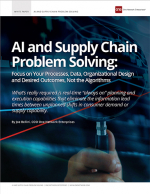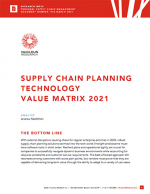The Top Ten Trends Transforming the Pharmaceutical Supply Chain
Solving the pharmaceutical S&OP problem is only half the equation, companies must also consider the full supply network related to executing operations, logistics, and distribution.
Technology vendors have made significant progress in permission based access and data level security causing supply chain leaders to reevaluate the deployment of a cloud-based planning layer over their core enterprise systems.
Properly implemented and designed, a cloud-based planning layer enables the sharing of S&OP data across key stakeholders: contract manufacturers, branded and generic business units, distributors, and retailers. This planning layer enables collaborative and iterative simulation planning that takes into consideration pertinent factors such as current demand, projected sales scenarios and supply constraints like lead time and capacity.
Once consensus has been achieved on the forecast and the upstream planning of materials and capacity have been agreed to by all concerned stakeholders (for example, the brand owner and its contract manufacturers), the plan can then be adopted by the respective ERP systems to generate lower-level planning like MPS or MRP. In more advanced implementations the cloud platform can be deployed at the execution layer as well, eliminating the need to integrate across multiple ERP silos.
The added benefit in the advanced case is the significant reduction of lead times across the pharmaceutical supply network.
The core of this platform shift resides in the master data model and associated data warehouse. The platform contains a deep and rich data model which represents data globally across all underlying systems, empowering both the advanced S&OP functions as well as supporting data and decision integration back into the ERP environment.
This allows the supply network to be easily rolled out to multiple sites within the enterprise and also adopted by new suppliers and customers.
However just solving the pharmaceutical S&OP problem is only half the equation. Companies must also consider the full supply network related to executing operations, logistics, and distribution as well.
What’s Related




Favorites





